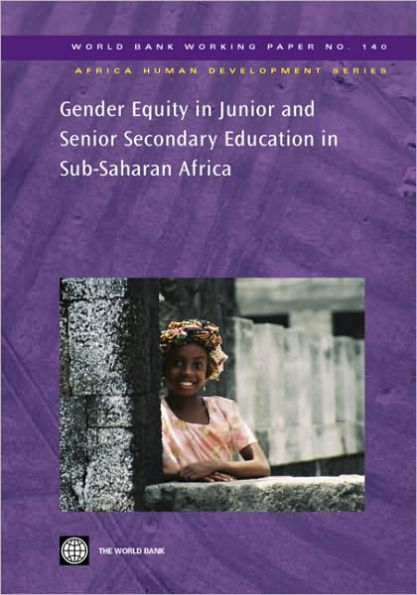Table of Contents
Foreword vii
Acknowledgments ix
Abbreviations and Acronyms xi
Executive Summary xiii
Resume Analytique xix
Introduction 1
Objectives of the Study 1
Scope and Content 1
Constraints of the Study 2
The Global and Regional Context 2
The Essence of Adolescence 4
Participation in Secondary Education in Sub-Saharan Africa: The Global Picture 7
EFA and Secondary Education 7
Definition of Terms 8
Gender Equity and Education 8
Secondary Education in SSA 9
Primary Completion and the Transition to Lower Secondary Education 10
Gender Disparity in Secondary Education: A Widening Gap 11
Factors Affecting the Participation of Girls in Secondary Education 21
Economic Policies, Growth, and Development 21
Equity, Financial Measures, and Good Governance 23
Making Girls' Schooling Affordable: The Impact of Fees 25
The Bottleneck Effect 26
The School Environment 27
Sociocultural Barriers 31
Violence against Girls 35
The Unreached 36
Summary of Factors 36
Promotion of Female Participation in Secondary Education 37
Two Policy Challenges 37
State Policy and the Promotion of Female Participation in Secondary Education 40
Institutions Addressing the Issue of Secondary Education 47
CAMFED 47
The Role of Civil Society: The FAWE Approach 49
FAWE Centres of Excellence: Making the Case for the Holistic Approach 50
Challenges of the COE Concept 54
Concluding Observations 57
Quality Factor 57
Importance of Intersectoral Approaches 57
Involvement of Students 58
Expanding Opportunities 58
Taking Best Practices to Scale 59
References 61
List of Tables
GER at Junior Secondary School Level in Senegal, 2000 11
Trends in Basic or Proxy Indicators to Measure EFA Goals 4 and 5 12
Share of Children 15-19 Who Have Completed Primary School, by Gender (percent) 18
General Performance in Mathematics in Tanzania, 2000 28
Subject Enrollment for the Malawi Secondary School Leaving Examination, by Gender 28
Reasons for the Low Participation of Girls in Science, Maths, and Technological Subjects in Ghana 29
National Open Apprenticeship Scheme, Edo State, Nigeria 30
Manazini Industrial Training Center Enrollment, 1990/91, Swaziland 30
Final Baccalauréate (Senior High School) Results in TVE in Burkina Faso (1992) 32
Details of Performance by Subject Area-High School Results in TVE in Burkina Faso (1992) 33
Factors Affecting Disparities in Secondary Education 35
A Summary of Obstacles and Possible Strategies for Overcoming Them 38
A National Vision for Girls' Education in Ghana: Gender Targets Set by the Girls' Education Unit, 2001 40
Female Participation Rates at Various Level of Education: 1998/90-2000/01 42
MOE/GEU Interventions in Girls' Education 43
Gender Activities by Development Partners 44
FAWE Pilot Centres of Excellence at a Glance 53
Costs of the Centres of Excellence 55
List of Boxes
Summary of Factors Affecting Disparities in Secondary Education xv
EFA and MDG Goals Related to Secondary Education for Girls 3



